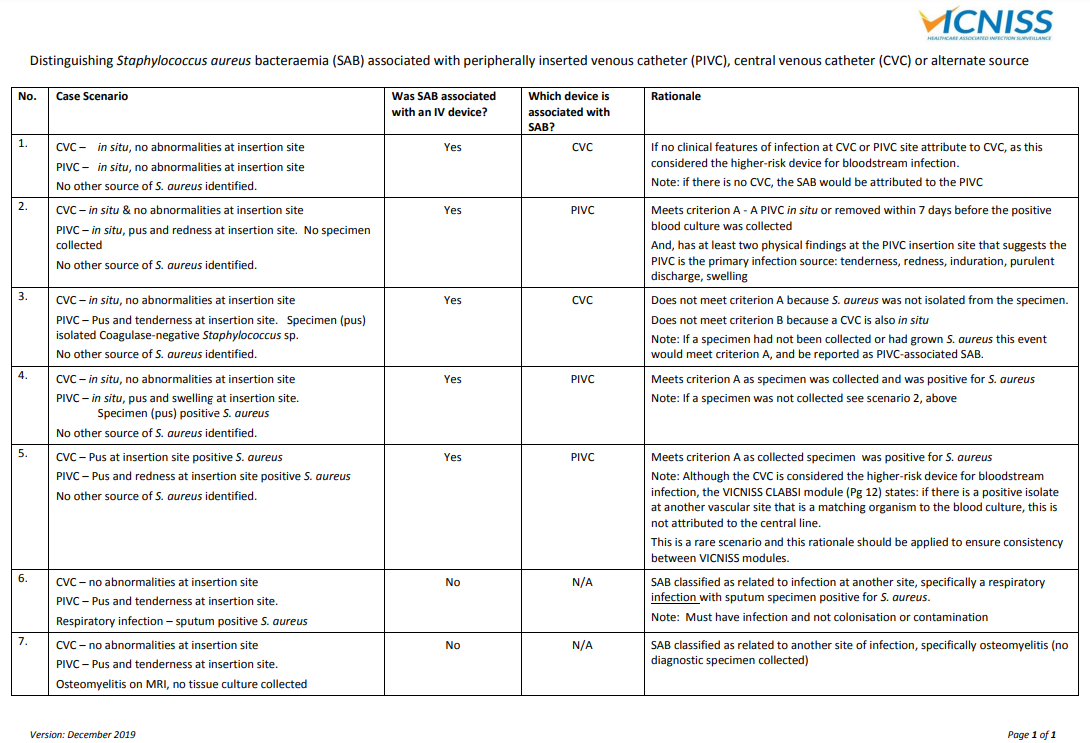How do I know if the patient's Staphylococcus aureus bloodstream infection came from the PIVC?
Staphylococcus aureus bloodstream infection (SABSI) contributes to significant morbidity and mortality, with about 25 to 30% of hospital-acquired cases resulting in serious or life-threatening illness. (Ausmed 2021). Common causes are skin and wound infections, surgical site infections and indwelling medical devices.
How do you decide if the vascular access device is the source of a patient's Staphylococcus aureus bacteraemia?
PVC-SAB is diagnosed when the patient has (1) positive S. aureus blood cultures, (2) purulence, redness and tenderness at the PIVC site, and (3) no other identified cause for the infection. Ideally two sets of blood cultures should be drawn from two different patient sites.
The Australian Commission (2016) states: "An episode of a SAB should be regarded as a complication of an intravascular (IV) device (and therefore counted/reported as healthcare associated) if: an intravascular catheter was present up to 48 hrs prior to the SAB episode and there is no other identifiable focus of infection due to Staphylococcus aureus. This does not mean that the IV line had to be in place for at least 48 hours."
VICNISS (2019) has this table to help you decide the source of the SAB.
References:Last Updated on: 01/04/2021










